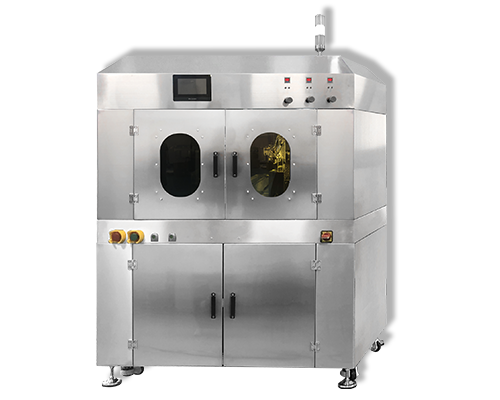Balloon Catheter Hydrophilic Coating Curing Method
Balloon Catheter Hydrophilic Coating Curing Method – Ultrasonic Sprayer – Cheersonic
After the balloon catheter enters the body, it will cause a series of reactions. For example, vascular endothelial damage and adsorption of bacteria due to catheter friction. In order to reduce the damage of the balloon catheter to the human body during interventional treatment and improve its surface biocompatibility and lubricity, the usual practice is to modify the surface of the balloon catheter with hydrophilic properties. An effective engineering method is to solidify a hydrophilic solution onto the balloon catheter surface.
Common methods that can be used for balloon catheter curing are electron beam curing and UV (ultraviolet) curing. Among them, electron beam curing has the advantages of high energy utilization, no need for initiators, and less pollution to the environment. However, because the electron beam curing equipment is relatively expensive, and inert gas is required for protection during the curing process, the curing cost is increased, and it is difficult to popularize and use it in a large area.
UV curing has the following advantages:
1. Fast curing efficiency: Generally, the curing process of the hydrophilic coating on the surface of the balloon catheter can be completed in less than 5 minutes.
2. Low equipment cost: UV curing equipment is relatively cheaper than electron beam curing equipment, and occupies a small area.
3. Low temperature curing: The curing process does not require heating, which avoids the damage to the balloon catheter caused by high temperature, and saves energy and protects the environment.
4. Less environmental pollution: The UV curing hydrophilic solution contains less volatile substances, which can reduce the impact of solution volatilization on the environment and improve the safety of operators.
Although UV curing requires a photoinitiator, its advantages of less stringent curing environment, higher curing efficiency, and lower curing cost make UV curing more and more widely used, accounting for more than 90% of the curing market.
The Balloon Catheter Coating System is a special spray system designed for drug eluting balloons that provides a uniform drug coating to the balloon catheter through ultrasonic spray technology. Ultrasonic Coating System can also be used to adjust and control the deposition process of drug coatings for different liquid formulations. With the help of a special fixing device design, the entire balloon catheter can be sprayed with a maximum spraying length of 280 mm., It also has the functions of solvent doping, pre-heating, humidity control, and drying. The equipment has the characteristics of precise application amount, uniform film layer, and high utilization rate of chemical liquid. Cheersonic has extensive experience in surface coating of implantable medical devices (such as drug stents and balloons), and can provide customers with complete solutions.
Ultrasonic nozzles are particularly suitable for a wide range of medical coating applications due to their very precise, non-blocking, repeatable spray performance and extremely low flow rate capability. For several years, Cheersonic has been providing ultrasonic medical coating system to medical device manufacturers worldwide. As medical device technology evolves, we will continue to design unique medical coating ultrasonic spray solutions to enhance patient safety and provide the highest quality medical device coating on the market.
